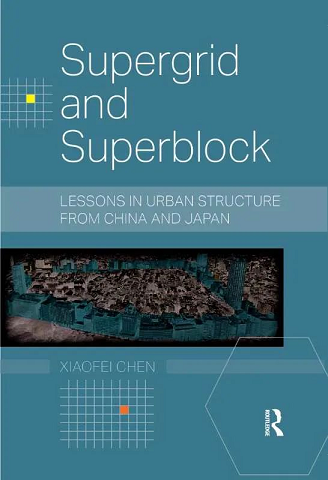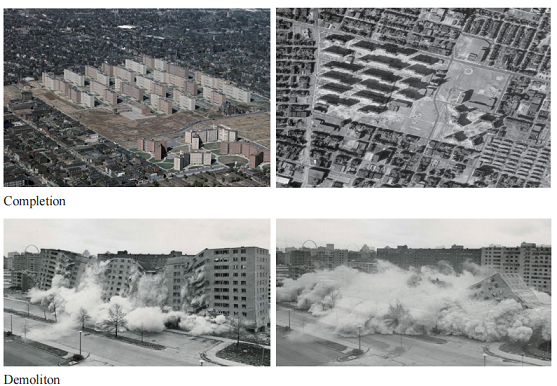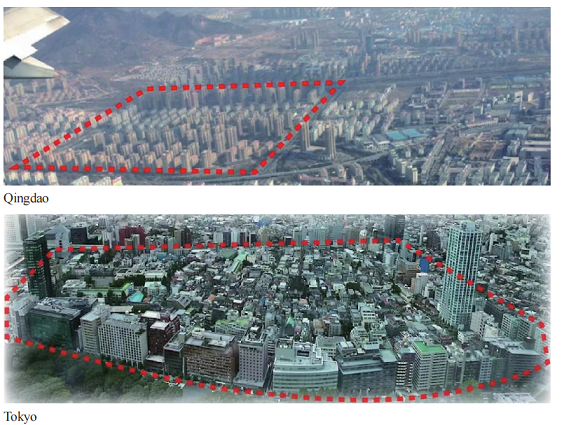


The book Supergrid and Superblock: Lessons in Urban Structure from China and Japan1 was written by Chen Xiaofei and published by Routledge in 2022. This book explores and interprets the urban morphological characteristics of China and Japan from the perspectives of ‘supergrids’ and ‘superblocks’.
Structured around Barrie Shelton’s conceptualization and explanation of ‘supergrids’ and ‘superblocks’, the book consists of seven chapters, each focusing on different aspects. The first chapter describes the prototype of ‘supergrids’ and ‘superblocks’ as common urban structures in East Asia. The second chapter explores the historical evolution and contemporary conditions of two major East Asian countries: China and Japan. Having thoroughly examined the cultural origins of ‘supergrids’ and ‘superblocks’ in Chapter 3 and their relevant urban design theories in Chapter 4, Chapters 5 and 6 proceed to present empirical case studies of Xi’an and Nanjing, as well as Tokyo and Kyoto, representing the urban structures of China and Japan. These case studies meticulously elucidate the significance of interconnections, interactions, and integration of spatial elements in developing ‘supergrids’ and ‘superblocks’ in China and Japan respectively. The final chapter concludes by summarizing that while China and Japan share similar urban spatial foundations in the form of ‘supergrids’, they have diverged in their development of distinct ‘superblock’ structures. Furthermore, the book provides a forward-looking outlook on the development of ‘superblocks’ in China. With rich illustrations and clear logic, this book is highly readable. It not only caters to scholars, practitioners, and students in the field of urban design, but also appeals to anyone interested in the urban morphology of East Asia. It stands as a scholarly work on East Asian urban form, offering a comprehensive resource accessible to English-speaking audiences.
This book has made remarkable achievements in three aspects. Firstly, it contributes to empirical and historical research in morphological studies. With its deep-rooted historical process, Chinese culture has profoundly influenced East Asian countries, including their urban morphological structures. By comparing the same urban prototypes in foreign lands with their places of origin, the book examines how these prototypes undergo changes during the localization process. It delves into the reasons behind these changes and offers interpretations. From the perspective of contemporary urban design theory, the book also explores how to interpret and evaluate the changes of these morphological elements and their impacts on current and future social spaces. Centering around the themes of ‘supergrids’ and ‘superblocks’, this book provides a comprehensive analysis and comparison of the morphological development trajectories of Tokyo and Kyoto in Japan, as well as Nanjing and Xi’an in China, featured by rich and detailed morphological analyses and historiographical narratives.
The second notable achievement of this book lies in its advancement of urban comparative research. Due to historical reasons, a significant portion of academic works with comparative perspectives has focused primarily on comparing Western and non-Western cities. However, due to significant differences in social and cultural contexts between Western and Eastern societies, the perceptions of space accumulated in daily life have structured the narrative text of ‘urban meaning’ in an unexpectedly different way. Consequently, comparative analysis of urban form often remains a one-sided narrative, making it challenging to establish a platform for two-way dialogue. Even behind the same urban form, the socio-spatial mechanisms and influences can be drastically different. Therefore, this book holds high value in terms of providing a platform for meaningful dialogue and reciprocal reflections, as it compares the urban spatial form of China and Japan, which both belong to the East Asian cultural sphere but have taken different socio-economic development paths in modern times.
Finally, the book offers positive reflections and insights into the reality of Chinese urban spaces, especially concerning the phenomenon of gated communities. Indeed, the concepts of ‘supergrids’ and ‘superblocks’ in this book, derived from the prototypes of ‘Royal City’ and ‘Tang Chang’an’, provide a fascinating perspective for the comparative study of East Asian urban spatial forms.
In summary, this book provides valuable insights into the historical and cultural factors that have shaped the urban forms of East Asia. It highlights the process of adaptation and transformation of urban prototypes in different contexts and provides a contemporary urban design perspective for understanding and evaluating these morphological changes and their implications for current and future societies. The in-depth analysis and comparative approach, using the examples of Tokyo, Kyoto, Nanjing, and Xi’an, make it a comprehensive work in morphological studies and urban design research.

Figure 1 Pruitt-Igoe public housing development at the time of completion and at the time of demolition

Figure 2 Urban blocks in Qingdao and Tokyo
Notes:
1. ISBN:9780367478889 (256 pages, in English)
2. Xu Miao, Professor, The Faculty of Architecture and Urban Planning, Chongqing University, Chongqing, P. R. China.
Author: Xu Miao
Source: <https://mp.weixin.qq.com/s/BsaYm9jKSLCIyYhcSUXgeg>
Edited by Liang Xiuchun